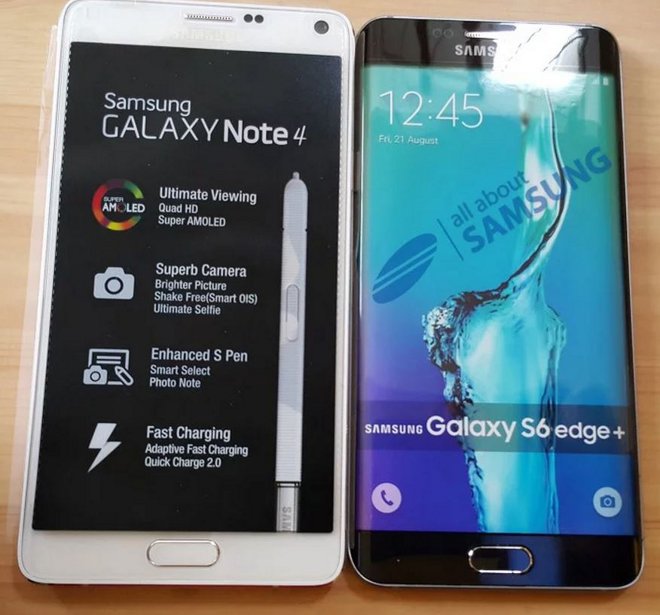With Samsung expected to reveal its new iPhone 6 Plus competitor as soon as next month, a trio of recently-leaked images appears to confirm previous rumors about the device's name and release date while showing off an anticipated gold offering.

A purported in-store demonstration unit of the S6 Edge+, published by German website All About Samsung, shows a scaled-up S6 Edge carrying the rumored S6 Edge+ branding. Samsung will be pitting the S6 Edge+ — as well as the upcoming Note 5 — directly against Apple's iPhone 6 Plus, which could cause confusion for some consumers.
The S6 Edge+ display appears to indicate that the device will hit retail shelves on August 21, while previous rumors had pegged August 12 as launch day. Samsung is rumored to have brought its usual September introduction for new flagship handsets forward in order to give the new devices some breathing room before Apple's anticipated iPhone 6s announcement.

Additional images shown off by PocketNow suggest that Samsung will give buyers a gold color option for the S6 Edge+, matching the jumbo variant with its smaller sibling. The photos also seem to confirm that the device will be powered by Samsung's own Exynos 7420, rather than Qualcomm's Snapdragon chips.
The S6 Edge+ is also likely to ship with 3 gigabytes of RAM and 32 gigabytes of built-in storage in the base configuration. RAM would rise to 5 gigabytes in the Note 5.

A purported in-store demonstration unit of the S6 Edge+, published by German website All About Samsung, shows a scaled-up S6 Edge carrying the rumored S6 Edge+ branding. Samsung will be pitting the S6 Edge+ — as well as the upcoming Note 5 — directly against Apple's iPhone 6 Plus, which could cause confusion for some consumers.
The S6 Edge+ display appears to indicate that the device will hit retail shelves on August 21, while previous rumors had pegged August 12 as launch day. Samsung is rumored to have brought its usual September introduction for new flagship handsets forward in order to give the new devices some breathing room before Apple's anticipated iPhone 6s announcement.

Additional images shown off by PocketNow suggest that Samsung will give buyers a gold color option for the S6 Edge+, matching the jumbo variant with its smaller sibling. The photos also seem to confirm that the device will be powered by Samsung's own Exynos 7420, rather than Qualcomm's Snapdragon chips.
The S6 Edge+ is also likely to ship with 3 gigabytes of RAM and 32 gigabytes of built-in storage in the base configuration. RAM would rise to 5 gigabytes in the Note 5.

Comments
Post a Comment